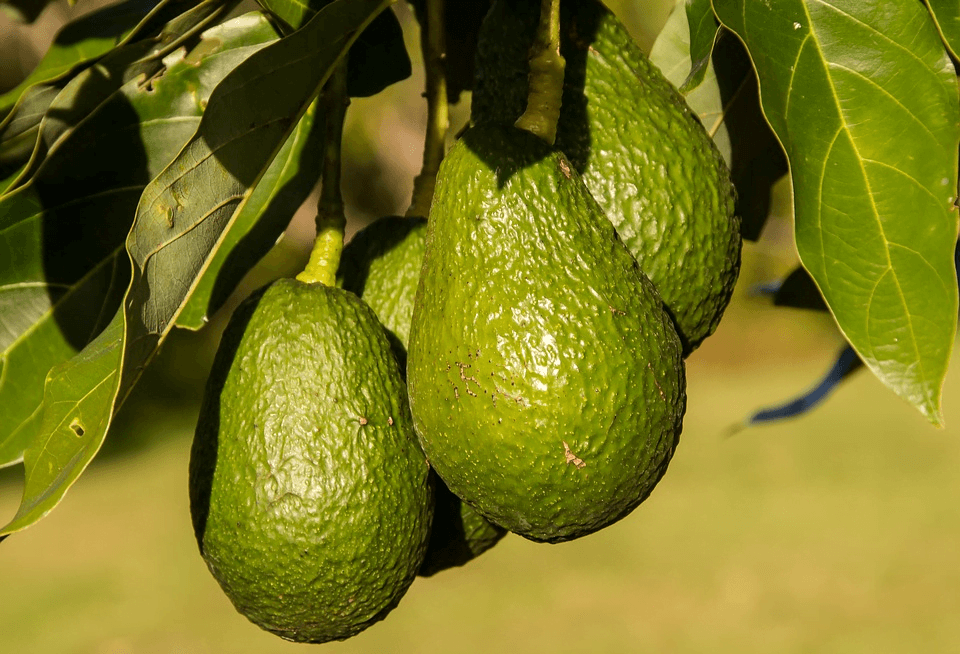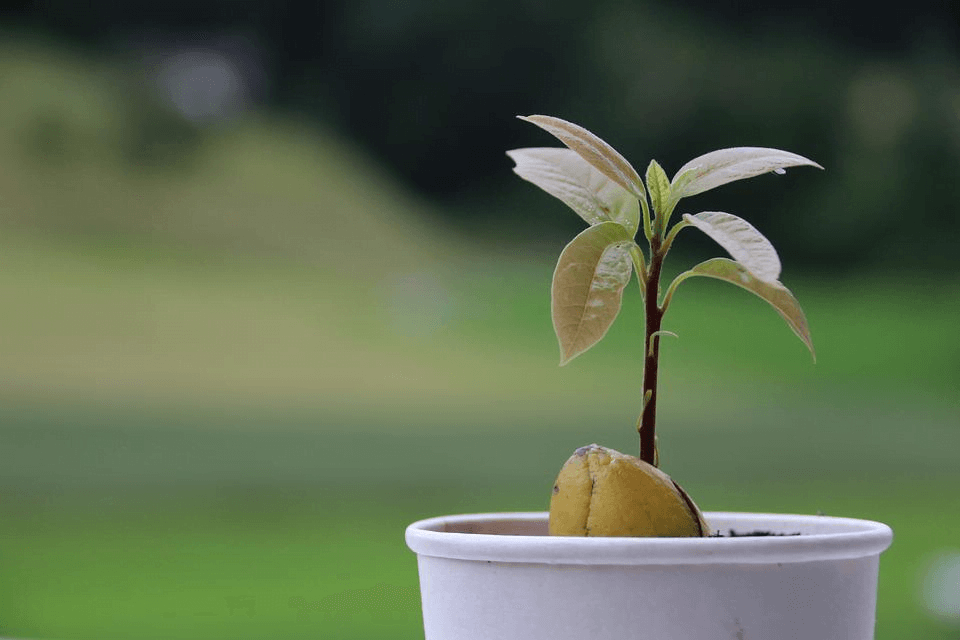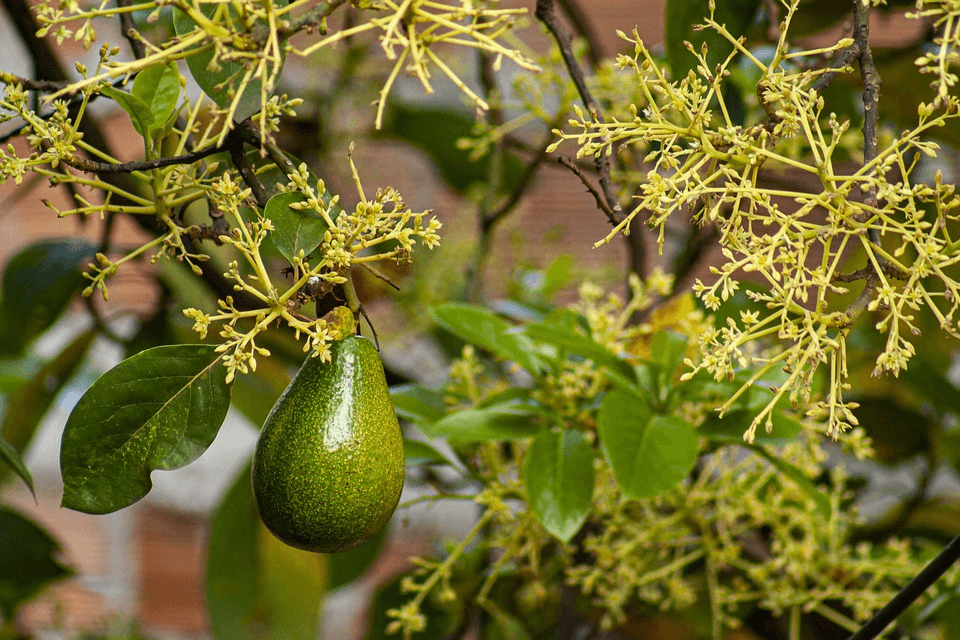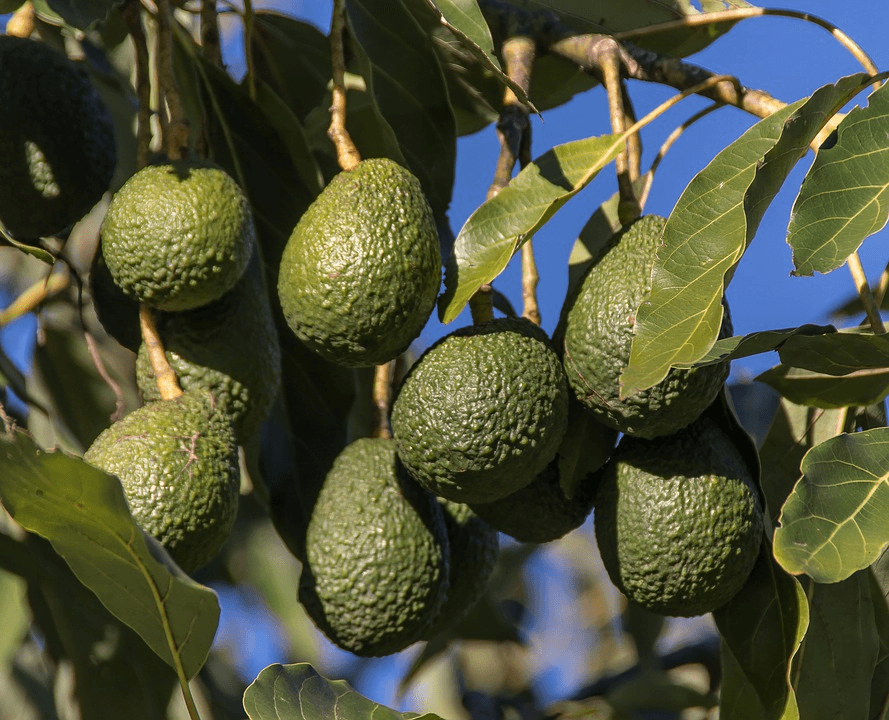Avocado trees offer numerous benefits beyond just the avocado fruit. If you’re thinking of adding another useful tree to your yard, an avocado tree might be on top of your list.
Growing an avocado tree from its seed will take up to 13 years while it takes avocado trees planted as saplings around 3 to 4 years to produce fruit. Healthy avocado trees have a growth rate of 3 feet per year and they grow up to 40 feet tall at maximum maturity.
This guide will educate you on the steps and timeline of nursing an avocado tree.

Steps to plant an avocado from the pit
Step 1: Clean the pit
When you finish eating your favorite avocado, you can plant it immediately if you want to start your avocado tree from the seed. Wash and dry the pit and ensure it is free of any avocado leftover.
Step 2: Prepare your pit and a jar of water.
It’s good to wash and dry the avocado pit to get rid of any leftover avocado. Fill up a jar of water, and locate the broad end of the avocado pit. The broad end will be made to face down in the water jar.
Step 3: Insert toothpicks around the pit
Before placing the pit in the water jar, you will have to insert a few toothpicks around its sides. This should be done in a way that about one inch of the pit will be immersed in water. The toothpicks will help to suspend the pit so it’s not fully immersed in the water jar.
Step 4: Locate a well-lighted place
Find good lighting: With your semi-suspended avocado pit, take your water jar to a warm and well-lighted sunny place. This will make it access warmth and light for proper germination.
Step 5: Maintain the water level
It’s important to monitor the level of water in the jar every day so it doesn’t leave the avocado pit dry. Once the water level goes down, you should refill it to the normal level.
The avocado pit will start to sprout in about 2 to 3 months. If your avocado seed still stays the same at this time, you might be dealing with a non-viable seed.
Step 6: Plant your seed in a pot
When the roots start growing thicker and the leaves start appearing, you can go ahead and plant inside a pot. Planting in a pot will help your new plant acclimatize gradually to its new environment. Plant by placing the lower part deep into the soil and the upper part still exposed above the soil level.
Due to their love for moisture, avocados are best planted in moderately humid environments for healthy growth. This is why they thrive well in USDA hardiness zones 8-11.
Step 7: Watch your avocado tree grow through the first year
The first year is always a vulnerable time for your avocado tree. It’s important you always watch out for potential signs of wilt and be proactive in keeping it healthy. Keeping your little plant in the pot to grow will be a safer option as this will reduce its exposure to environmental risks until you have an avocado tree sapling.
Step 8: Transplant your avocado tree sapling
The first step in planting your avocado sapling into the ground is to pick the right location. If you are hoping to get avocados from your tree, you should make sure the tree gets lots of sun.
Avoid planting your avocado too close to other trees or any structures. This is to ensure that the roots do not get close to plumbing pipes and foundations of buildings.
Dig up the right-sized hole for the root of your avocado. It’s best to have the root located about 6 inches below the soil level. And the hole should be for times the actual size of the root ball. Insert the root ball into the hole, fill it up, and water heavily.

Step 9: Avocado maturity and fruiting
Even though the avocado tree may not be fully matured before bearing fruits, it would have matured enough for fruit production between 3 to 13 or even 15 years. The actual durations depend largely on whether you plant an avocado seed or a grown sapling.
Remember, If you opt to plant an avocado tree straight from the seed, you should be prepared to wait for a longer time frame before expecting your first avocado fruit production.
Pollination in avocado trees
Even though Avocado trees are self-pollinating, having two avocado trees will help to enhance fruit yield. There are two types of flower sets produced by Avocado tree cultivars known as type A and type B flowers. Each of these flower types is receptive to pollen at different times of the day.
In some trees, the flowers will open first in the morning as functionally female flowers, close, and then reopen the next afternoon as functionally male flowers. This is known as the type A flowering sequence.
In other trees, the flowers open first in the afternoon as functionally female, close, and then reopen the next morning as functionally male flowers. This pattern is known as the type B flowering sequence.
The timing of these stages will determine the classification of each avocado variety into either type A or B flowering sequence.
The best pollination and fruit yield occur when you have both type A and type B cultivars growing together. When both trees grow together in the same garden, the overall yield of each tree will be much higher than when we have each of them growing alone.

Where do avocados trees grow?
Avocados grow best in warmer regions of the United States. Places like Florida, California, Mexico and South America have good environmental conditions that support the growth of avocados.
Care of an avocado tree
If you are planning to plant a young avocado tree or even the seed, it’s important to keep it under the right environmental and growth conditions to ensure that your tree will thrive throughout the growing process.
1. Temperature
Avocado trees do well in warm and moderately moist climates. If your avocado tree is indoors, you should mist the leaves up to two times daily. This will ensure that your plant gets enough moisture.
If your avocado tree is outdoors and you live in a very cold area, planting an avocado tree may not be recommended. Avocado trees can still thrive in cold temperatures between 28-32 Fahrenheit, exposing the tree to temperatures beyond this will affect its growth rate and overall health.
2. Watering
It’s important to water your avocado tree 2 to three times a week. When the tree is getting matured, you can reduce the amount of water to about once per week.
An avocado tree on average requires 20 gallons of water depending on the size of the tree. If your soil has enough moisture to stain your hand with some water, you may not need to introduce extra watering to your avocado tree.
3. Sunlight
Avocado trees are best planted under direct sunlight. They need an average of at least 6 hours of sunlight per day. If your avocado tree is indoors, you should be sure to place it in a bright and sunny spot every day. This way it will be able to get as much direct sunlight as possible.
How to increase fruit production in avocados

1. Use of fertilizers
Applying fertilizers to avocado trees can encourage them to bear fruit. Young and upcoming trees require fertilizer application about six times per year. This will equal once every two months.
Older trees that are 4 years and older should be fertilized four times per year or once every 3 months.
Fertilizer like 6-6-6-2 or 8-3-9-3 is the best to use. Divide the fertilizer into equal portions to deliver 1.5 to 3 pounds per year for a one-year-old tree, 3 to 6 pounds for a two-year-old tree, 6 to 9 pounds for a three-year-old tree, 9 to 10 pounds for a four-year-old tree and 10 to 14 pounds for a five-year-old tree.
Trees over five years old require an extra 2 pounds of fertilizer per year for each year of the tree’s growth up to a maximum of 20 pounds.
2. Nutritional supplement
Avocado trees less than five years old will do well if supplied with nutritional sprays containing zinc, boron, manganese, and molybdenum. You can spray the young trees six times per year. For older trees, sprays containing zinc and manganese will do.
Spray older trees four times per year. Always apply the nutritional sprays at regular intervals around mid-spring to late summer. If an avocado tree is growing in alkaline soil, it may be deficient in iron.
Applying iron chelate soil drenches between early and late summer will help to compensate for this nutrient deficiency and boost the growth, fruit yield, and overall health of the tree.
Want professional advice?
The fastest and easiest way to get 3 estimates from the most affordable tree services near you would be by using this FREE service.
GoTreeQuotes.com quickly matches you with the 3 tree surgeons voted #1 by previous users in your area.
- Scroll up to the top of the page and enter your ZIP Code in the blue form at the top of the page.
- Give us a few details about your avocado tree job plus some contact information.
- Your tree details are forwarded on to the closest three tree services all voted best priced who will also price your tree job.




